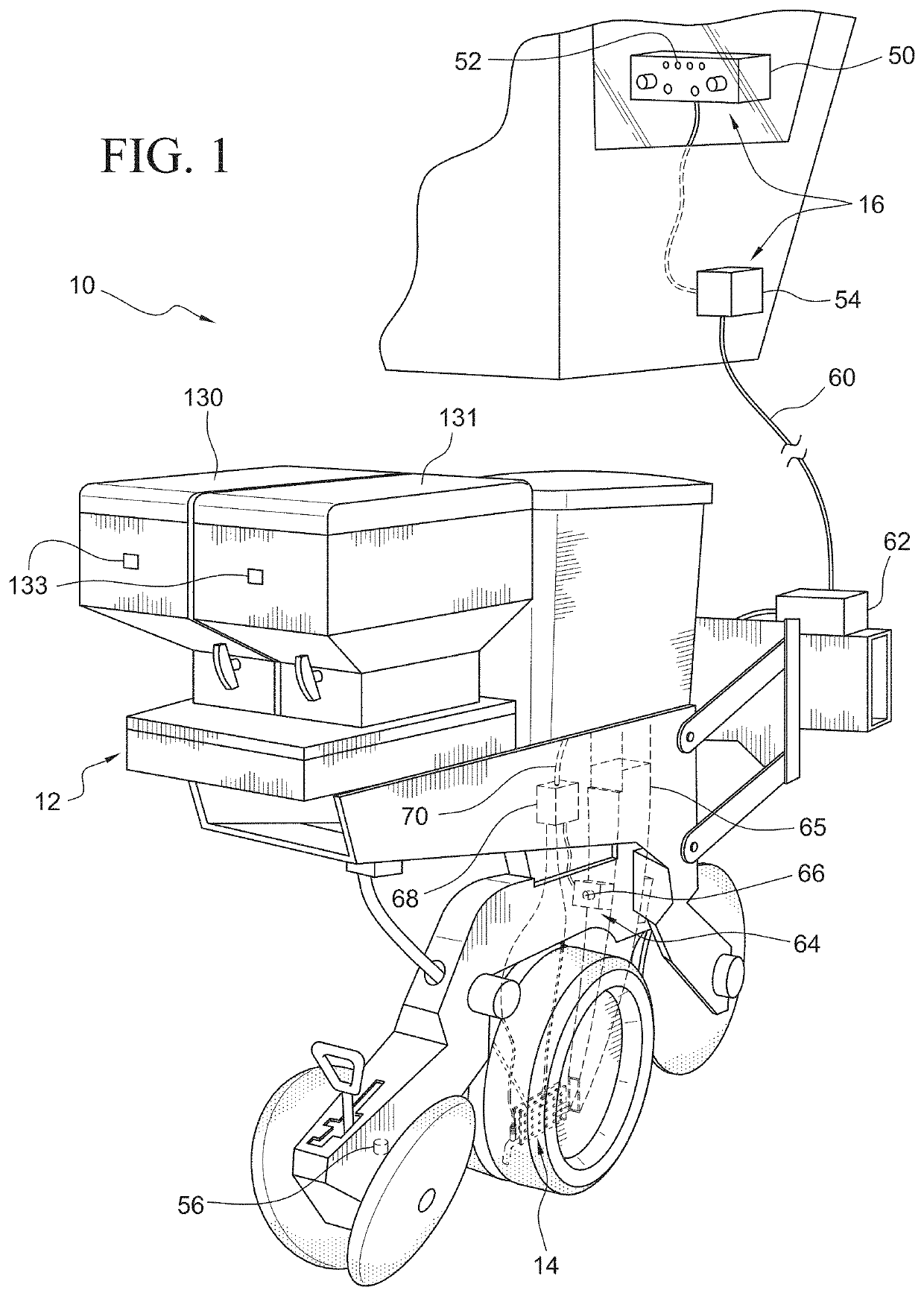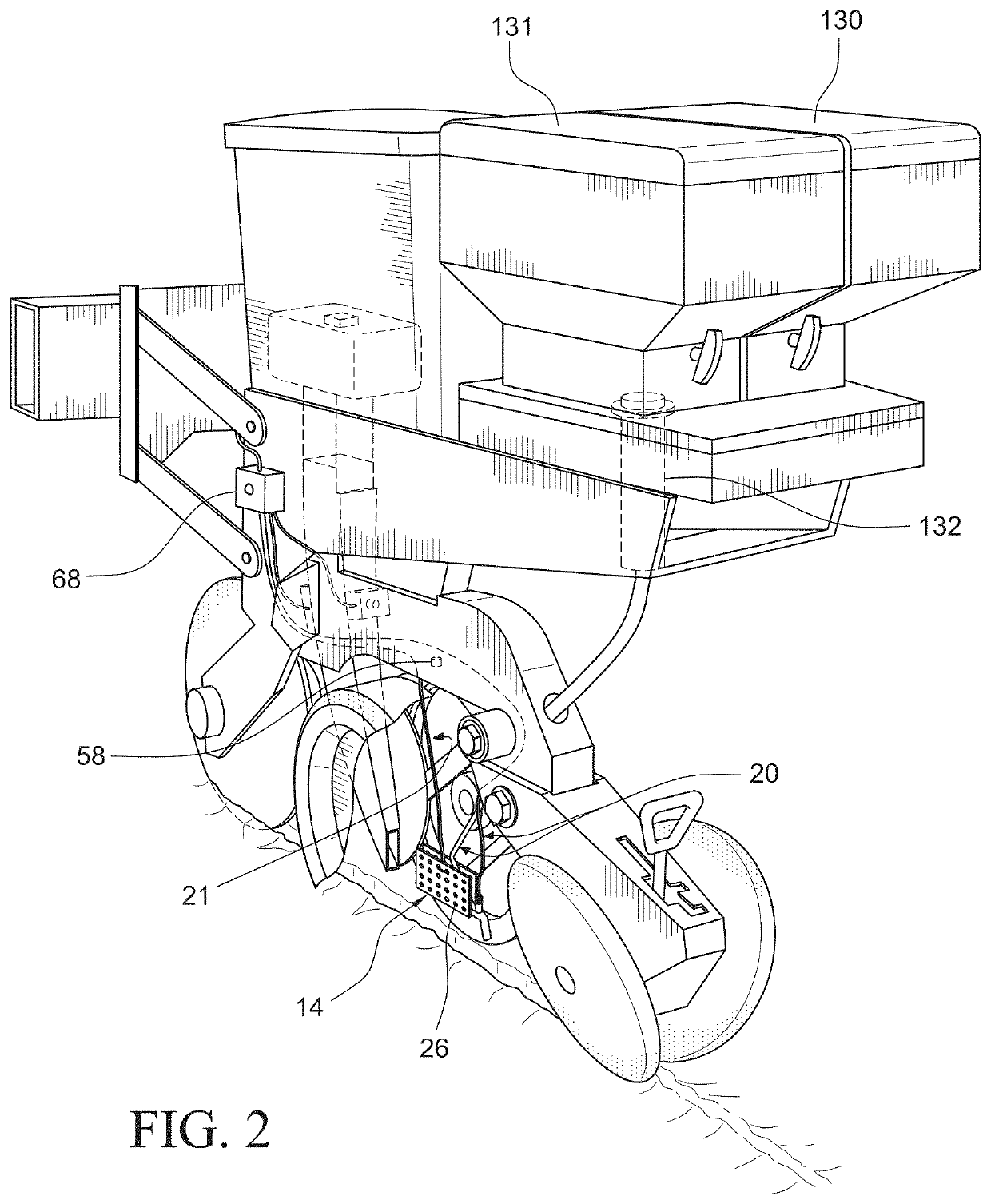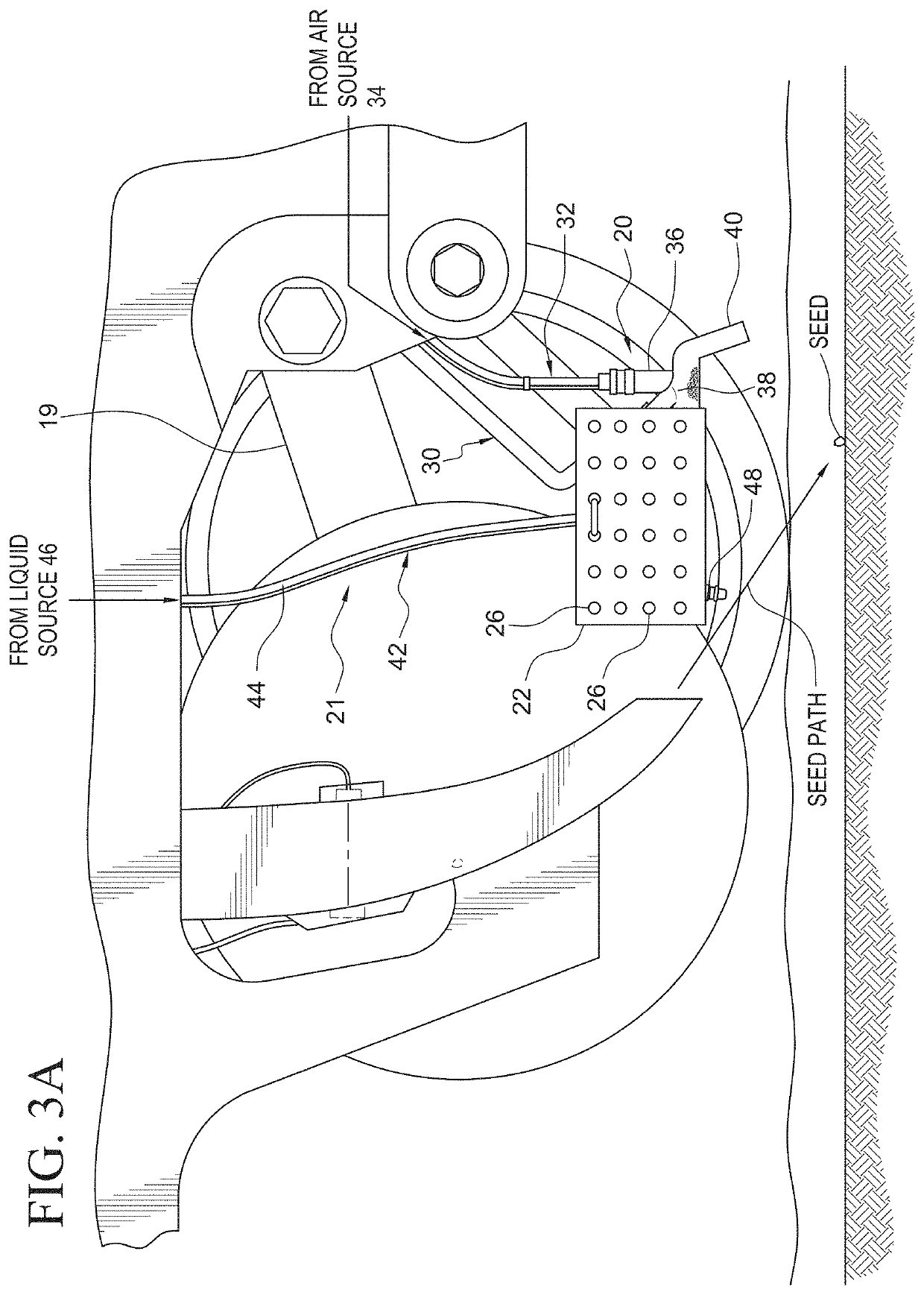System and method for dispensing multiple low rate agricultural products
a technology of agricultural products and systems, applied in the direction of insect catchers and killers, liquid fertiliser regulation systems, etc., can solve the problems of low-rate commercial devices for dispensing liquid products while planting, inability to synchronize, and current low-rate liquid pulsing/synchronization technology cannot apply such low rates, so as to improve overall agronomic performance and improve agronomic performan
- Summary
- Abstract
- Description
- Claims
- Application Information
AI Technical Summary
Benefits of technology
Problems solved by technology
Method used
Image
Examples
Embodiment Construction
[0058]Referring now to the drawings and the characters of reference marked thereon, FIGS. 1 and 2 show a simplified diagram of a system for dispensing multiple low rate agricultural products, designated generally as 10, positioned on a planter 12. The system 10 includes a Multiple Low Rate Agricultural (MLRA) product application device 14 configured to cooperate with a planting equipment monitor assembly 16 (i.e. seed sensing device) positioned to sense a seed being discharged from planting equipment, i.e. planter 12.
[0059]The MLRA product application device (i.e. “aiming device”) 14 includes a common housing 18 for a plurality of low rate agricultural product input assemblies 20, 21. As will be discussed in more detail below, the low rate agricultural product input assemblies 20, 21 have exit ports supported by the common housing 18.
[0060]Referring now to FIGS. 3A, 3B, 4, and 5, each MLRA product application device 14 includes two plates 22, 24 securely supported in a spaced apart ...
PUM
 Login to View More
Login to View More Abstract
Description
Claims
Application Information
 Login to View More
Login to View More - R&D
- Intellectual Property
- Life Sciences
- Materials
- Tech Scout
- Unparalleled Data Quality
- Higher Quality Content
- 60% Fewer Hallucinations
Browse by: Latest US Patents, China's latest patents, Technical Efficacy Thesaurus, Application Domain, Technology Topic, Popular Technical Reports.
© 2025 PatSnap. All rights reserved.Legal|Privacy policy|Modern Slavery Act Transparency Statement|Sitemap|About US| Contact US: help@patsnap.com



